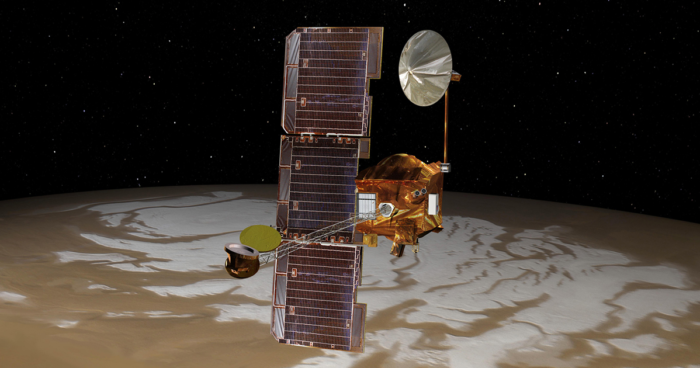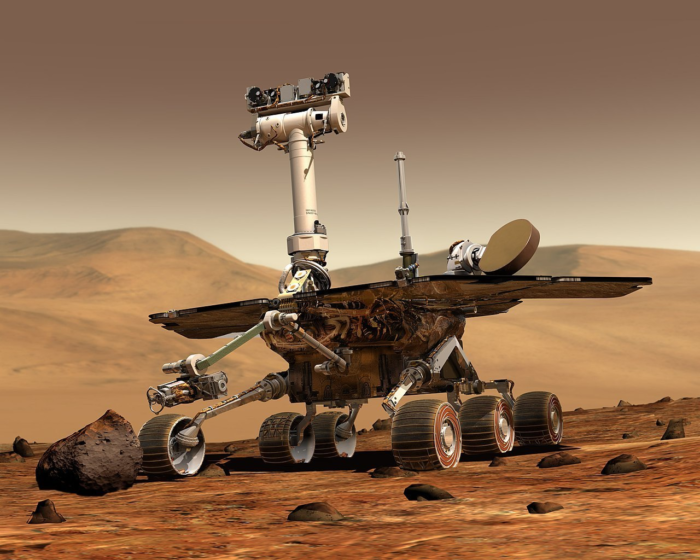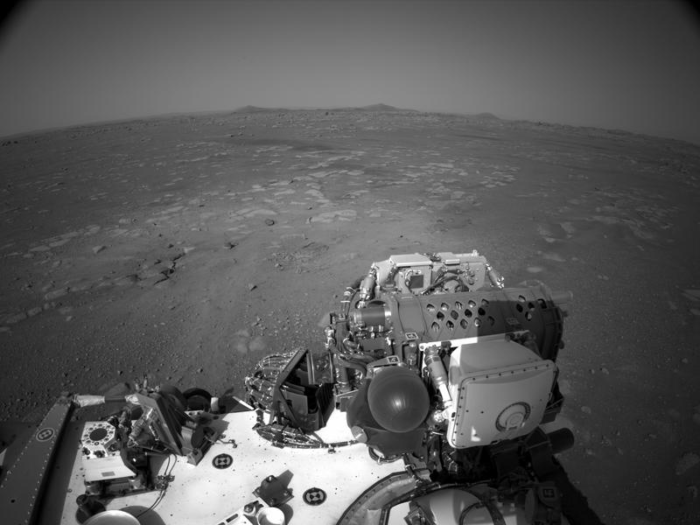Welcome to Let’s Talk Space, your up to date guide to the most exciting news articles (in our opinion) within the space industry. In this edition, we discuss Mars; the journey, the landing and everything found!
‘Mars? What was wrong with the moon?’ is the most common question Bezos and Musk get asked according to DW. But here is the thing; no matter if the motivation is from “there’s nothing more exciting than being out there among the stars” (Elon Musk) or from “we are going to run out of energy” (Jeff Bezos), our solar system’s so called Red Planet is predicted to provide the most suitable atmosphere for human habitation in the solar system, which is enough driving force for science. Main indicators for the exploration of Mars include signs of ice water, Martian days are only 39 minutes longer than Earth’s, 38% less gravitational pull compared to Earth, and an atmosphere (albeit quite thin) that offers protection from cosmic and the Sun’s radiation. Lots of information here, so we have simplified it with a timeline.
1.Baby Steps

Let’s start with a brief history. Casting our minds back to the 1960s, the first attempts to meet Mars began at the same time as most space explorations. The main thing to remember here is the rivalry of the US’s NASA, and the space programme of the USSR. The USSR has launched five attempts between ‘60-’63 for the intended Mars flyby; Marsnik 1, Marsnik 2 (both spacecrafts failed to reach Earth orbit), Sputnik 22, Sputnik 24 (both had a fatal issue after reaching the Earth’s orbit) and Mars 1 (ironically, made it far, but lost radio contact… Mars 1 could have asked ET for help to phone home by now…). For the US, Mariner 3 went on its way in ‘64 but this time, America ran out of battery, and the flyby failed within an hour. Fixing this very difficult problem, NASA sent Mariner 4, and has finally completed its first Mars flyby in ‘65. You can read more about the first successful mission here.
While the US has enjoyed plenty of photos and information from more successful flyby’s, the USSR has continued to fall behind with failed attempts, only reaching Mars 10 years after the first attempt (1971).
2. NASA success, USSR troubles

The 70’s-80’s for the USSR mainly involved failed attempts, in either lost radio contact, not settling into orbit and flying away from the planet, or getting destroyed. NASA has continued to see success; landing through its Viking mission in 1976.The Viking program became the first extended Mars mission, lasting for years, transmitting reams of information about atmosphere, meteorite like composition and controversial results about microbial life. The 90’s called for cheaper missions, as NASA’s 1990 attempt had cost 800 million USD, and completely failed, introducing the Faster, Better, Cheaper program to avoid this downfall in the future. After the USSR dismantled in ‘91, Russia continued with failed Mars missions. NASA’s Mars Odyssey launched March 7, 2001, and became the longest serving spacecraft on Mars in 2010, obtaining about 350,000 images, mapping 95% of NASA Mars information. You can find out more about this here. The European Space Agency has entered the stage, with sending its lander-orbiter to Mars in 2003, losing its lander, but currently still being on an extended successful mission.
NASA’s Mars Odyssey, launched 2001
3. 2000’s – What’s new

NASA’s Spirit and Opportunity rovers were sent to Mars in 2004 and served until recently. Spirit was lost in 2010 (very dramatic sounding, we know), while Opportunity served for another 8 years, until the mission was concluded in 2019; both rovers being destroyed by a sand storm. NASA has found lots of information, including ice under the surface, dormant volcanoes, water-soaked areas, detecting methane on the surface and finding organic compounds with rover Curiosity, which is still in operation in 2021. With regards to efforts on the other side of the globe, the European Space Agency has collaborated with Russia in 2014, in launching an orbiter (Trace Gas Orbiter), with monitoring Martian atmosphere, still providing useful information today. NASA’s Curiosity has inspired Perseverance, which landed on Mars February 18th 2021, on a mission to find samples with potential signs of life in them. “This is the first time we’ve been able to capture an event like the landing of a spacecraft on Mars. We will learn something by looking at the performance of the vehicle in the videos.” says Mike Watkins, the director of the Jet Propulsion Laboratory, NASA’s Mars mission control. This was the first time where a rover has landed live on camera, which were simple, off the shelf sports cameras. Mars landing is a bit of an extreme sport if we may say.
4. Future Indications
While the rover only landed a couple of days before this publication, NASA has so far been able to release the live footage of the Mars landing, showing Perseverance reaching the ground. The rover has since sent its first “thumbnail” low resolution image from the Red Planet, and we can expect a lot of new and sharp images soon. The average time it takes to communicate, or for a message to pass between Earth and the rover is currently 11 minutes 20 seconds, so we should expect updates quite frequently. Currently, the rover has also sent back its first audio recording too on the 22nd February, which you can listen to here.

This image was acquired on 22 Feb 2021 at 15:57:38, NASA/JPL-Caltech, showing Perseverance on the surface of Mars.
To see more breathtaking raw photos up to date, you can do so here. NASA’s briefing, 24-7 updates can also be found here.
So there you have it! The story of Mars in one newsletter. No matter if our means behind exploring are to gaze at the stars, or to outlive the apocalypse, there is a promising future for new findings. With new technology, and masses of failed attempts, we have learnt amazing extraordinary things about the Red Planet, and this is only the beginning. Cosmonauts loves space tech, and we can’t wait to see the discoveries 2021 will bring. We have a wide range of space talk updates and posts, so in case you haven’t had the chance, you can read the previous publication here.
Until our next space talk!
Follow us on social media
Categorised in: Space Tech

